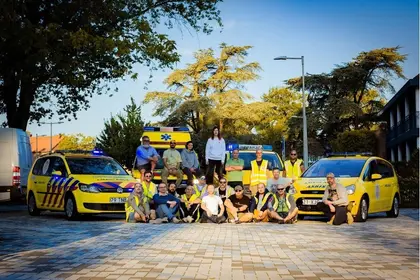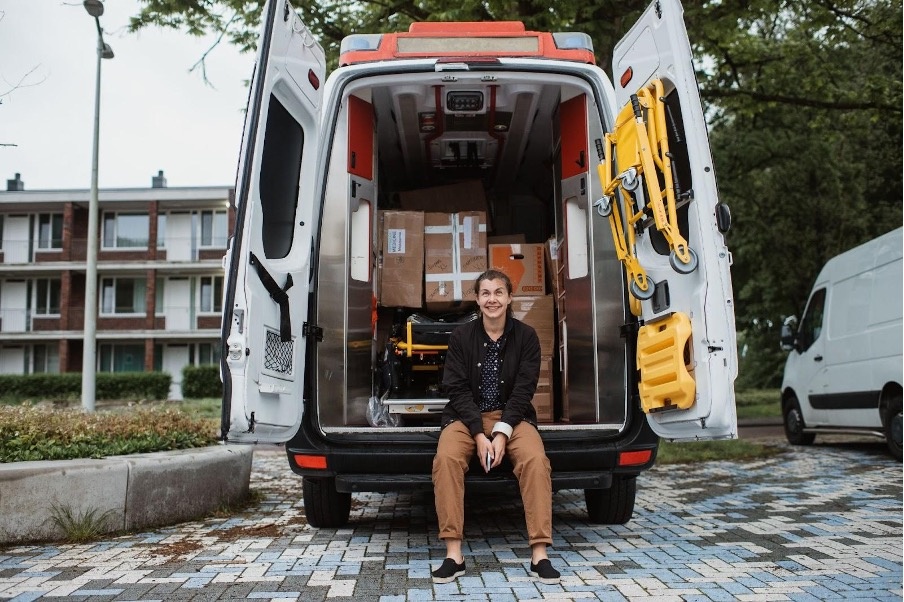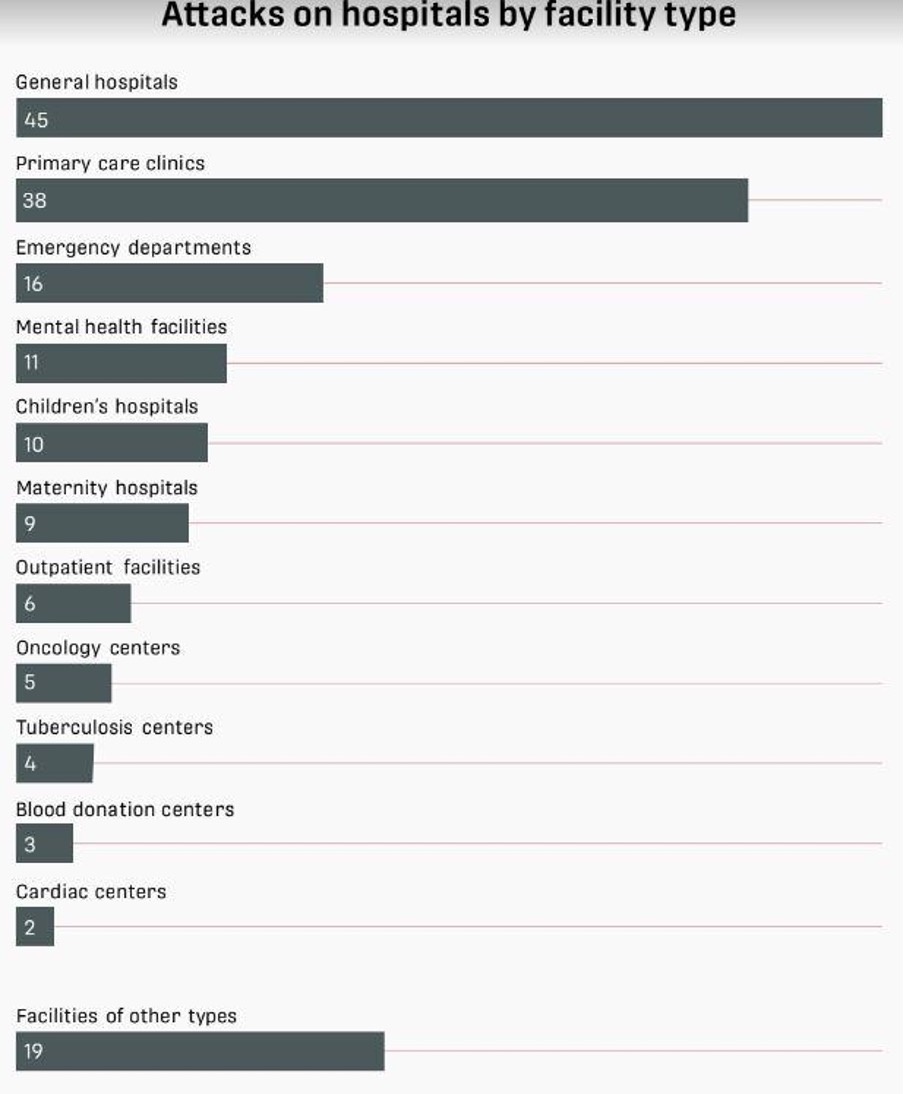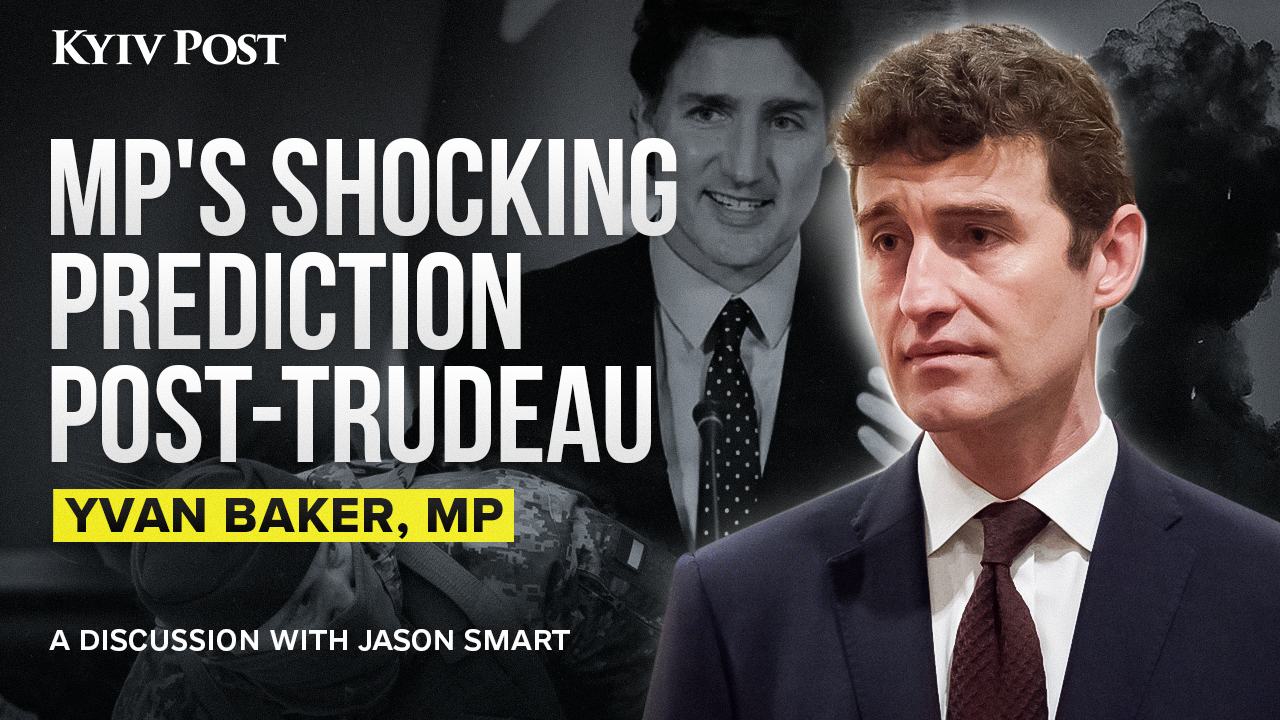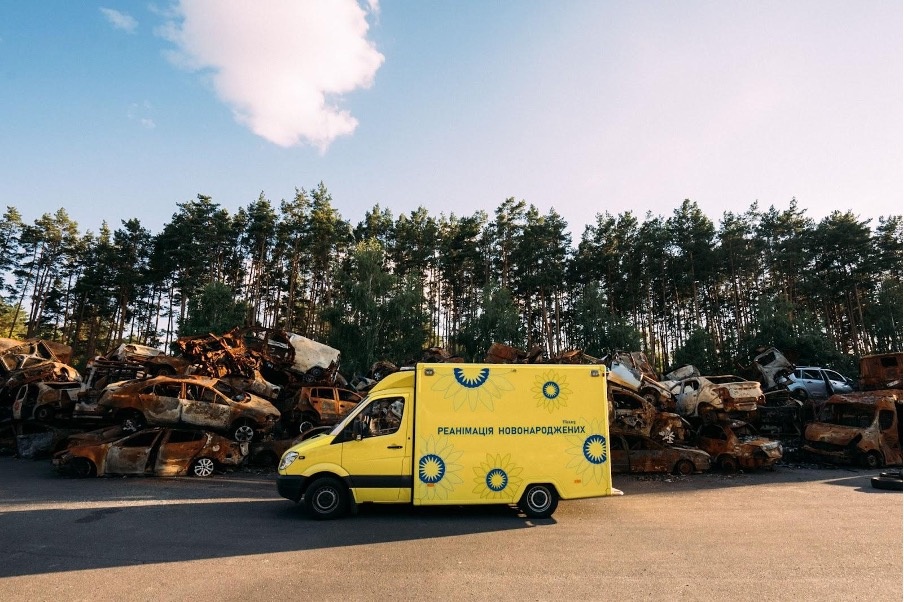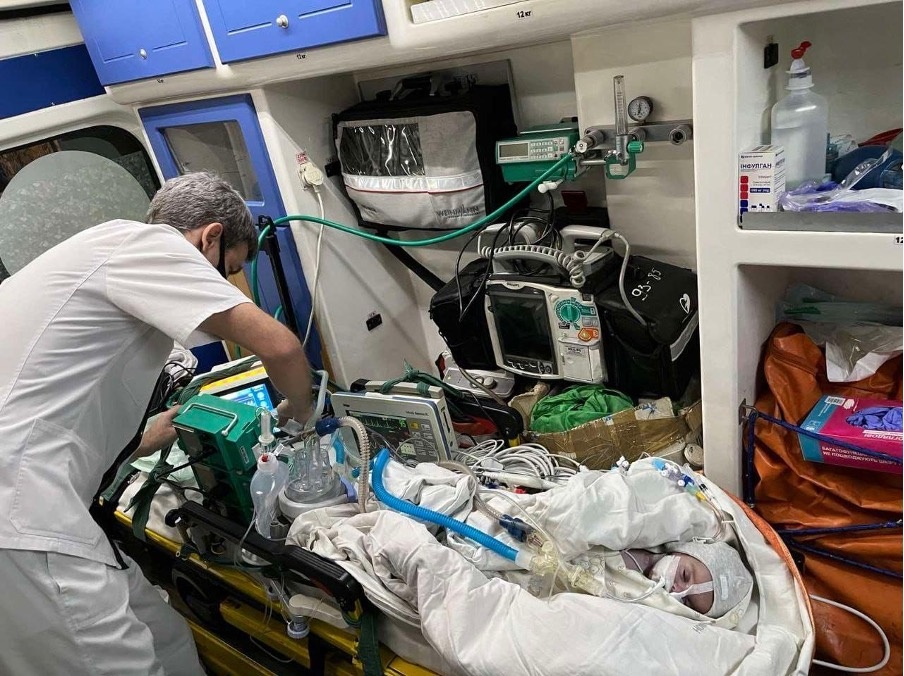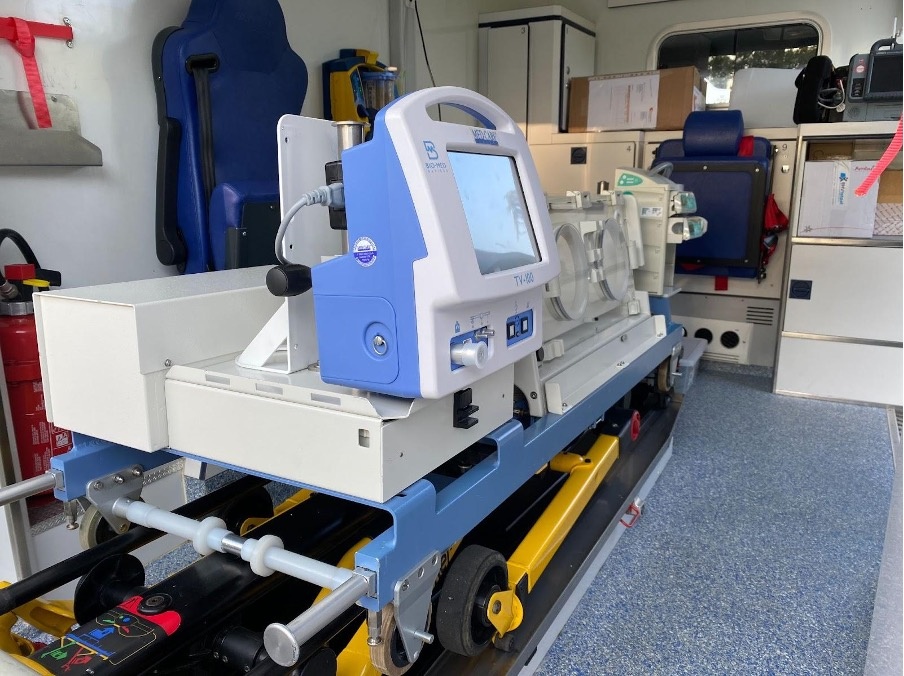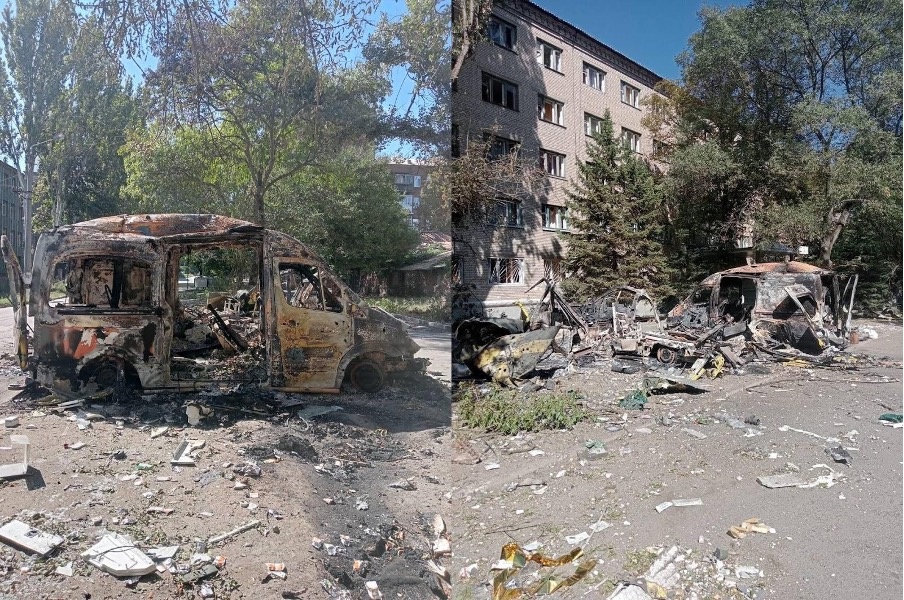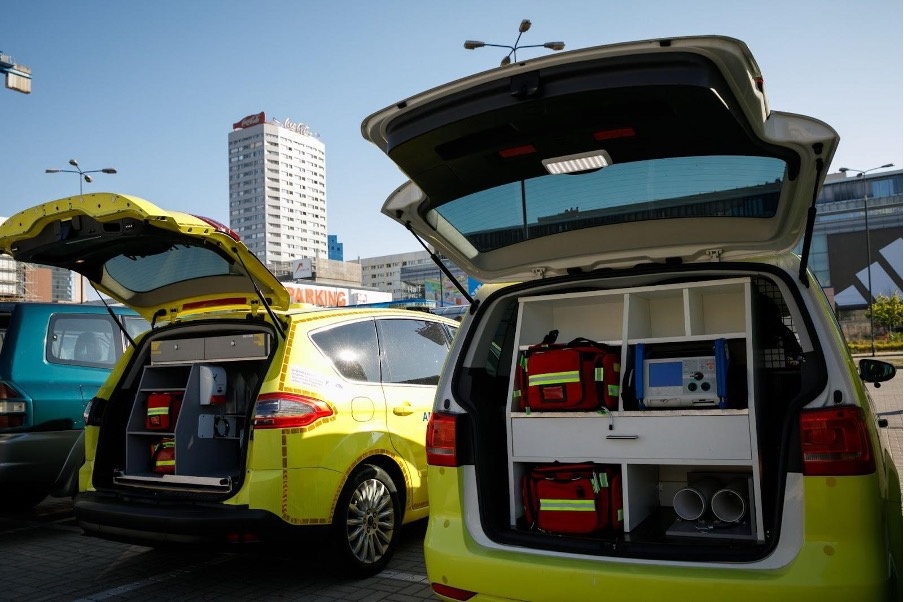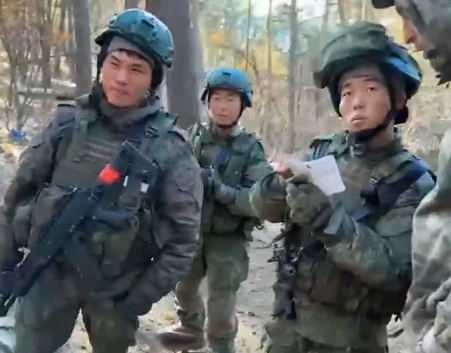The Russian invasion of February 24 caught Ukraine in the middle of healthcare reform and recovery from the COVID-19 pandemic. As occupiers destroy the Ukrainian healthcare infrastructure, quite often deliberately, one Dutch charity foundation is working to not only restore but upgrade the country’s emergency medical services (EMS).
During her initial call with the founders of Zeilen Van Vrijheid in late February, Maria Pedenko, now Zeilen’s medical coordinator, insisted: “If something does not help or is not scientific, we are not doing it.” One hundred ambulances in, this approach has exceeded even Pedenko’s own expectations. Alongside “regular” medical transport, Zeilen delivered several neonatal and paediatric ambulances, as well as rapid-response ones: vehicles that the doctors can drive alone in hard-to-reach areas.
JOIN US ON TELEGRAM
Follow our coverage of the war on the @Kyivpost_official.
Yet, it all started with, simply, lots and lots of learning. “There were long night readings,” Pedenko recalls. Every Zeilen coordinator contacted their network in Ukraine to reach hospitals, government bodies, and pharmaceutical companies. The insights from these institutions helped Zeilen to analyze countless requests they were getting from Ukrainian hospitals at the start of the 2022 invasion. “We checked all requests,” Pedenko explains. “Hospitals were sending them everywhere so we checked the need and coordinated with other foundations to understand what is the most urgent.”

Ukraine Says Moscow Struck IDP Shelter in Russia’s Kursk
The chaos of the first days of the Russian invasion saw many Ukrainians relocating to safer areas. The constant flow of people made it even more difficult to understand on-the-ground needs, as nobody could be sure how many patients a certain hospital is treating at a given moment. Many doctors relocated, too, to protect their families, leaving medical facilities understaffed.
The demand was only soaring, especially as Russian troops were targeting Ukrainian healthcare institutions. In the first phase of the invasion (February 24 – April 7), Russians shattered 168 health facilities – on average four a day – and injured or killed at least 20 health professionals. All in violation of international humanitarian law, which sets out special protection for healthcare infrastructure and personnel.
Before the war, Ukraine had around 3,118 ambulances – an average of 0.7 per 10,000 people. “Ambulances were needed even before the war and will be needed afterwards,” Pedenko explains. “We wanted to work towards the future.”
So the deliveries started and quickly got more specialized.
“When we received the request from Odesa Children’s Hospital for a neonatal ambulance, we did not know what it was or how it should be built,” Veronika Mutsei, Zeilen’s Chairwoman, outlines. Zeilen is based in the Netherlands and works closely with three specialized vehicle refurbishment resellers. With their help and, again, lots of reading and consulting, Zeilen delivered the “babylance” to Odesa. It included an incubator, a lung ventilation unit, and a special defibrillator. Pavlo Fednov, an advisor to Ukraine’s Ministry of Health, co-drove it from Amsterdam. Three other “babylances”, to Mykolaiv, Poltava, and Cherkasy, followed.
Pedenko ensured that the neonatal ambulances would meet EU safety criteria. “I love standards,” she smiles. “They provide safety,” She underlines. The standardisation puts certain devices in specific spots, reducing the probability of mistakes. Doctors always know where to look for equipment, and nothing will accidentally switch off on a bumpy road. In its 2020 report on the state of Ukrainian emergency healthcare, the WHO highlighted the “need to review and update the national Emergency Medical Services operational standards”.
The next innovation came from the other side. One of Zeilen’s Dutch suppliers asked whether they needed paediatric ambulances. Those serve to transport kids up to the age of 12 and are equipped with adjustable stretchers and appropriate-sized electrodes, tubes, an advanced lungs ventilator, and more. After consulting the head of the Ukrainian Scientific and Practical Centre for Emergency Medical Care and Disaster Medicine in Kyiv (USPC), Vitaliy Kryliuk, Zeilen learned that Ukraine has no such cars in its public healthcare service. The foundation subsequently sent two children ambulances to Zaporizhzhia and Dnipro.
Russia has not stopped destroying Ukraine’s healthcare facilities. Between February 24 and Sep. 28, the World Health Organization counted 550 attacks, 469 of which impacted facilities, 144 supplies, and 75 transport. In September, two ambulances that Zeilen delivered to the Zgraya paramedic team were destroyed in Bakhmut, Donetsk Region. Despite red crosses on the vehicles, Russian occupying forces targeted one with a rocket strike. Its oxygen tank exploded and the second car caught fire in the blast. Nobody got hurt but all the medicines and equipment inside were destroyed.
Although breaking international humanitarian conventions by attacking ambulances is nothing new for Russia. In 2019, the Russians shelled and destroyed an ambulance in the Vodiane district amid ceasefire negotiations in the Donbas industrial region.
During the war, such acts are ever-more destructive, as they deprive the most vulnerable Ukrainian citizens of basic services. Most people who stay in occupied or contested rural areas are elderly, and so require special medical attention. A report by WHO showed that even before the war, bad roads, difficult access, and shortage of medicines were significant obstacles for EMS. In rural areas and towns, community healthcare services were often the only source of medical support. Upon their destruction and the displacement of doctors, the inhabitants are left with no medical care.
Zeilen’s new project is tackling precisely those challenges. The foundation sent five rapid response ambulances to Dnipro, Kyiv, Kharkiv, Mykolaiv, and Zaporizhzhia. Such vehicles look like passenger cars but are equipped with a defibrillator and special doctor bags, and comply with safety standards. They are easy to use, which enables doctors to drive on their own instead in teams of three. Doctors can then examine patients in remote and hard-to-reach areas. “With these cars, you need less personnel to cover a bigger area,” Pedenko outlines.
Zeilen has already received some feedback on the first “doctor cars”, and it is overwhelmingly positive. Pedenko shares that “the cars are well-received by medical staff and the public.”
Veronika Mutsei, Zeilen’s Chairwoman, says it intends to scale up the dispatch of rapid response ambulances and to continue sending the “regular” ones.
The issue, however, is funding: as the war continues and “Ukraine fatigue” kicks in, Zeilen receives less and less support from donors.
Not that this will stop the work of the foundation. “We will keep going. No matter if it will be one or 10, cars, we will keep sending them,” Pedenko asserts.
You can also highlight the text and press Ctrl + Enter


